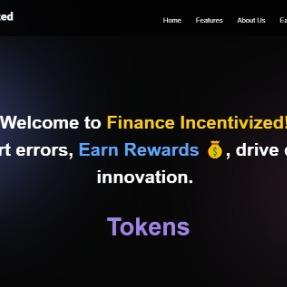Feedback Incentivized (FI-Dapp)
Get Your FeedBacks Payable through FI Protocol. Find --> List --> Earn
Created on 30th June 2024
•
Feedback Incentivized (FI-Dapp)
Get Your FeedBacks Payable through FI Protocol. Find --> List --> Earn
The problem Feedback Incentivized (FI-Dapp) solves
Problem: Traditional bug reporting methods are often cumbersome and lack incentives. Companies struggle to gather comprehensive feedback, leading to unaddressed errors that impact user experiences and business operations.
Solution: Feedback Incentivized offers a user-friendly bug reporting platform that incentivizes users to report errors. This facilitates direct communication between users and companies, providing actionable feedback for swift issue resolution and platform enhancement.
Competitive Advantages
- Seamless Bug Reporting: Intuitive interface for effortless bug reporting.
- Transparent Reward System: Clear rewards for valid bug reports drive user engagement.
- Direct Company Collaboration: Swift issue resolution through direct communication.
- Actionable Insights: Valuable feedback provided to partner companies for platform enhancement.
Business Model
- Token-Based Rewards: Users earn tokens for validated bug reports.
- Partner Collaborations: Companies benefit from actionable bug reports to enhance platforms.
- Premium Services: Offering premium bug resolution and analytics services.
Go-to-Market Strategy
- Community Engagement: Engage bug-hunting communities for active participation.
- Strategic Partnerships: Collaborate with platform owners and tech communities.
- Education and Awareness: Create content educating companies about bug bounty benefits.
- Targeted Campaigns: Tailored marketing campaigns for specific market segments.
Challenges we ran into
- Integration Complexity: Integrating smart contracts for token rewards and bug validation posed initial complexities due to the need for secure and efficient transaction handling.
- Data Verification: Ensuring the accuracy and reliability of bug reports required robust data verification mechanisms to prevent fraudulent submissions and ensure fair reward distribution.
- User Experience Optimization: Balancing the platform's simplicity with comprehensive bug reporting features was a challenge, as we aimed to provide an intuitive interface without sacrificing functionality.
How We Overcame Them:
- Collaborative Development: We engaged in collaborative development sessions to brainstorm solutions and streamline the integration process.
- Iterative Design: We adopted an iterative design approach, soliciting feedback from users and stakeholders to refine the platform's user experience continuously. This involved conducting usability tests and incorporating user feedback to optimize the platform's functionality while maintaining simplicity.
Tracks Applied (5)
Coinbase Smart Wallet
Coinbase Onchain Verifications
Paymaster and Bundler
OnchainKit
Payments Track
PAYMENTS with Stripe
Technologies used
Cheer Project
Cheering for a project means supporting a project you like with as little as 0.0025 ETH. Right now, you can Cheer using ETH on Arbitrum, Optimism and Base.
